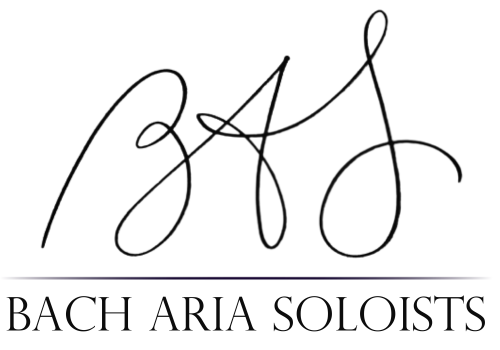Bach Aria Soloists complete 24th season with Spring concert
Bach Aria Soloists, in Thailand, 2022: L-R Hannah Collins, Elisa Williams Bickers, Elizabeth Suh Lane, Sarah Tannehill Anderson. (Credit: Henry Lane)
In the Midwest, Spring is capricious and comes in fits and starts, disarmingly warm one day, icy winds the next, the sudden spurts of rain making way for sunny skies.
With a program as varied as the April weather, Bach Aria Soloists leaned into seasonal offerings with a delightful “Spring Concert,” closing out their 24th season at St. Andrew’s Episcopal Church on Saturday.
Elisa Williams Bickers started the program with John Weaver’s “Toccata” for solo organ. The celebratory piece was written originally for the instrument at Village Presbyterian Church, where Bickers is associate director of music and principal organist. The piece was joyous and uplifting, with a fanfare-like opening and perpetual motion rhythms generating like tendrils through the piece, a veritable pulse of Spring.
Bickers wore a diaphanous black and white floral patterned outfit, which flowed dramatically as she strode from organ consul to the harpsichord at the front of the altar. Also kitted out in floral black and white, the rest of the ensemble joined her—Elizabeth Suh Lane, BAS founder and artistic director, on violin; Hannah Collins, cello; Sarah Tannehill Anderson, soprano—with special guest Eddy Jiang on violin, an accomplished high school senior and student of Suh Lane’s.
After the performance: Hannah Collins, cello; Sarah Tannehill Anderson, soprano, Elizabeth Suh Lane, violin, Elisa Williams Bickers, keyboards, with guest Eddy Jiang, violin. (Credit: Jennifer Rosenlatt)
Of course, every Bach Aria Soloists performance features works by Johann Sebastian Bach, or work otherwise inspired by or connected to him. To this end, they performed an elegant aria by Johann Sebastian Bach, Schlafe mein Liebster, BWV 213, featuring a lovely Tannehill Anderson. Later in the program, they presented two additional, rather delicate, Bach works: Bach’s “Vergnügen und Lust,” BWV 197, with Suh Lane, Bickers (on organ), and Tannehill Anderson, the strings with a dance-like accompaniment, and “Mein gläubiges Herze,” BWV 68, (adding Jiang, and Bickers to harpsichord), with a wonderful fugal section and violins trading notes in a subtle textural shift.
The performance included a Bach precursor from the English Baroque, with Henry Purcell’s setting of Henry Heveningham’s “If Music Be the Food of Love.” Tannehill Anderson seemed especially expressive in this work, relishing the elaborate ornamentations with both joy and yearning.
Bach’s influence through the centuries was demonstrated throughout the performance, including the first movement of Ludwig van Beethoven’s Violin Sonata no. 5 “Spring” showcased Suh Lane and Bickers on piano. The piece’s shifting moods, not unlike Spring’s wide-ranging weathers, along with the sprightly attention by the musicians, gave the work an energy of spontaneity. From the Classical era, they presented the Allegro from Wolfgang Amadeus Mozart’s Trio Sonata in G Major, K. 496, a pleasant showpiece with a conversational feel.
The Romantic era selection was Johannes Brahms’s Sonata for Cello and Piano in E minor, Op. 38, the third movement. This piece was darker than the rest of the program, storm-like, with vast shifts and a torrential storm of notes that Collins and Bickers addressed with vibrant intensity, making it a crowd favorite.
Collins was also featured in selections from Bright Sheng’s 1995 “Seven Tunes Heard in China,” a suite for solo cello. Inspired by traditional Chinese folk music, the work would seem far removed from the tonalities and energies of Bach, but was still in keeping with traditions he helped establish. Movement one, “Seasons” (Qinghai), felt exploratory, adventurous; movement three, “The Little Cabbage” (Hebei), featured interesting harmonies through inventive double stops; and movement five, “Diu Diu Dong,” a song from Taiwan, made use of the extremes of the instrument, implying the motion and hiss of a train.
The finale piece was straight up fun, featuring Tannehill Anderson on Johann Strauss, Jr’s waltz “Voci di Primavera” (Voices of Spring), Op. 40, with Bickers on piano. The lighthearted piece nevertheless had acrobatic vocals, and Tannehill Anderson hammed up the various “voices,” from pouts, to smiles, to outright sass, causing many in the audience to chuckle, and at the song’s conclusion, give the show a standing ovation.
Reviewed Saturday, April 20, 2024. For more information about Bach Aria Soloists, visit www.bachariasoloists.com.
This post originally appeared on KC Studio Magazine’s website on April 23, 2024. Written by Libby Hanssen.


